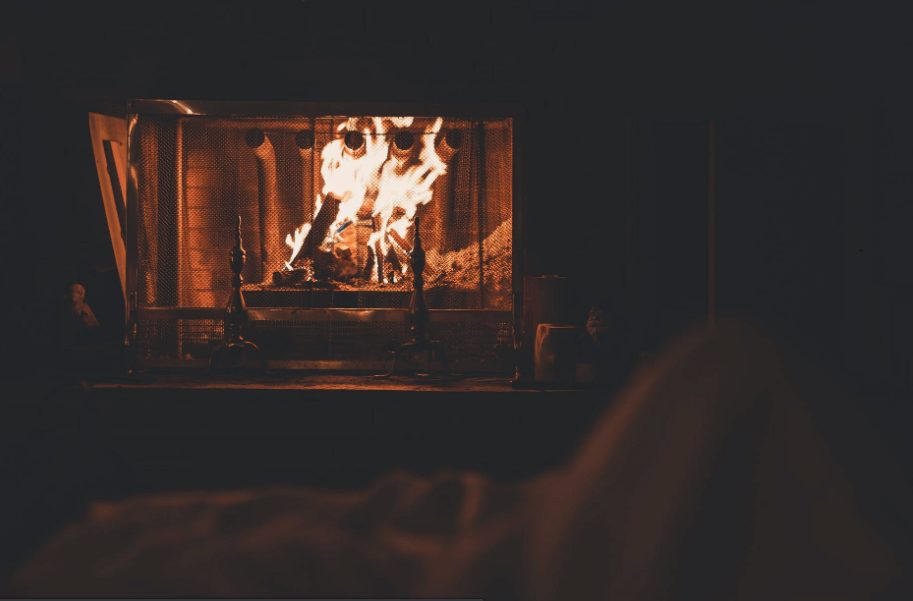Looking for tips for heating your home on chilly autumn nights and through the long, cold winters? Such trying times are made comfortable and cozy with a fireplace or woodstove that family and friends can gather around. A fireplace will comfortably heat your home and roast your marshmallows. However, restrictions and cautions related to firewood must be considered for this pleasant warmth to be safe and inviting.
The key takeaways are that firewood should be purchased locally, and from nearby, to prevent the spread of invasive pests and save one’s own home, neighborhood, state, and ecology from being affected. It should also be seasoned, so that the fire is effective, as opposed to counterproductive.
Firewood should also be treated and stored efficiently to maximize your use of it and ensure that it does not end up causing more harm than good! Here are some tips that will help you heat your home with the use of firewood.
Tips For Heating Your Home
Purchase Locally-Produced Firewood
It is highly recommended and ever so often urged to purchase firewood locally from within your city. This is as a result of regulatory restrictions under the Emergency Order that prohibits out-of-state firewood, especially firewood that is untreated, to come into Maine. Authorities additionally caution against the transportation of firewood across a distance of more than 50-miles.
These steps have been taken to control to spread of pests that endanger and may deplete Maine’s forestry and wildlife. According to the National Firewood Task Force, firewood is one of the leading ways in which invasive pests spread. These pests are various insects and diseases, such as the Emerald Ash Borer (EAB) and the Asian Longhorn Beetle (ALB), which are present on or in the firewood and may or may not be visible.
To be safe, it is recommended that untreated or dubious firewood that has not been purchased from within the state be burnt and replaced with locally acquired firewood and that only so much firewood is purchased as is to be burnt. Pests in firewood run a risk of potentially destroying your and your neighbor’s trees and adversely affecting your landscape and the value of a property.
The restrictions on the transportation and acquisition of firewood from outside the state arise as a counter to the potential spread of these invasive pests. This is because people often take contaminated firewood along for camping or hunting trips or burning within their homes. It must be realized that such transportation of firewood may cause widespread infestation to increase exponentially in comparison to how much the damage would be otherwise. You may even risk introducing a new disease or pest in your area!
Make Sure the Firewood is Properly Seasoned
To get a cozy, warm, and good fire going, it is recommended to buy dry and seasoned firewood instead of greenwood. The sap in fresh, green wood prevents the wood from burning well or efficiently in terms of combustibility as well as the warmth that results from it.
In order to have seasoned wood, it must be dried properly to reduce the moisture below 20% as this will give you a fire that produces more heat, is easy to light, burns more effectively, and even smells better!
The Environmental Protection Agency also recommends the usage of firewood that is locally cut and seasoned dry. Drying firewood on your own might be tricky because the wood may appear dry but the most microscopic of its tubes may still be retaining water – even a year after the tree has been cut.
Don’t Use Green or Wet Wood!
Green or wet wood is classified as being unseasoned. Unseasoned firewood not only doesn’t burn as well but also produces more smoke, ash, and waste. These elements could be responsible for messing with your fireplace and chimneys.
Furthermore, burning green or wet wood in fireplaces is inefficient as the moisture creates smoke, leading to creosote to build-up within chimneys. This sticks to the chimney, causing issues with your flue. We all know that cleaning or replacing the chimney flue comes with a lot of hassle and is, in most cases, time-consuming and expensive.
A blocked chimney does not allow harmful emissions, such as carbon monoxide, soot, and tar, to escape, pushing them back into our homes. These factors may potentially cause a massive explosion and increase the risk of setting fire to the entire house.
Storing Firewood
In order to keep termites away from your home, ensure that most of the storage is at a safe distance from your house, and only short-term supplies are stored nearby. The firewood that is stocked nearby should not be propped against the house or any other wooden structures or flammable items.
In an attempt to save the firewood from infestation, do not apply insecticides and pesticides to them! This is because once you burn the firewood, it releases any hazardous and toxic fumes in your house and surroundings!
Preserving Firewood Effectively to Make it Last
Firewood also has to be stored smartly! Exposure to rain or snow would interrupt its seasoning and might even cause it to rot beyond usage. For this reason, not only should it be stored in a covered place, but it should also not be kept on the ground.
The ideal place to store firewood is in a woodshed that allows cover but is also partially open for circulation. A woodshed will ensure that the wood is properly covered if the weather is unfavorable, such as in rain or snow.
Looking for seasoned firewood or more tips for heating your home in the Greater Portland area to heat your home this upcoming season? Contact us here to ensure that your home always remains a warm and safe space for you and your family!


0 Comments